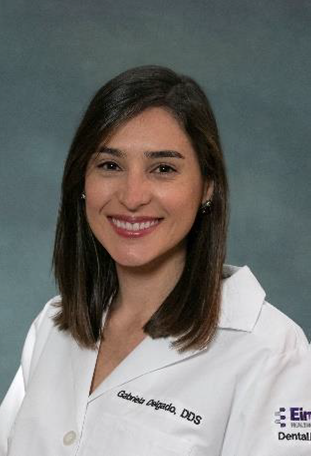Back
Table Clinics
(TC25) Laser-assisted Endodontic Microsurgery: Let There Be Light
Thursday, April 28, 2022
1:00 PM – 4:00 PM PST
Location: Exhibit Hall

Gabriela Delgado, D.D.S.
Resident
Albert Einstein Medical Center
Albert Einstein Medical Center
Philadelphia, Pennsylvania, United States
Presenter(s)
Abstract: Endodontic surgery has been shown to be a highly successful treatment modality for teeth with post-treatment endodontic disease. Over the past decades, innovative devices and materials, including the dental operating microscope, ultrasonics, CBCT imaging, bioceramic root-end filling materials, surgical guides, and operative techniques, have improved the predictability and outcomes of apical surgery. Clinicians have traditionally used scalpel blades for incision of the overlying mucoperiosteal tissues, burs and ultrasonic tips to complete the osteotomy, root end resection and root end preparation. Recently, newer technologies such as dedicated piezosurgical devices and hard and soft tissue lasers have been introduced to enhance the outcomes as well as facilitating the procedure. The Biolase Waterlase iPlus is an Er,Cr:YSGG laser that has hard and soft tissue capabilities and has been successfully used in the treatment of periodontal and peri-implant diseases. As such, this laser is well suited for use in endodontic surgery for incision of the mucoperiosteal flap, osteotomy, root end resection, disinfection of osseous crypt, resected root end surface and exposed dentin, and debridement or ablation of the periapical soft tissue pathosis. Additionally, this laser also provides for significant hemostasis in the surgical field as compared to traditional methods. A significant advantage of utilizing this type of laser is that this may be the only device necessary to accomplish every step of the surgical endodontic procedure. This case-based table clinic will serve as a review of the indications, contraindications, and procedural steps for a Laser-assisted endodontic microsurgery procedure.

.jpg)
.jpg)
.jpg)